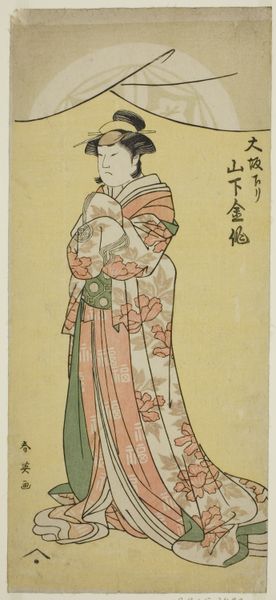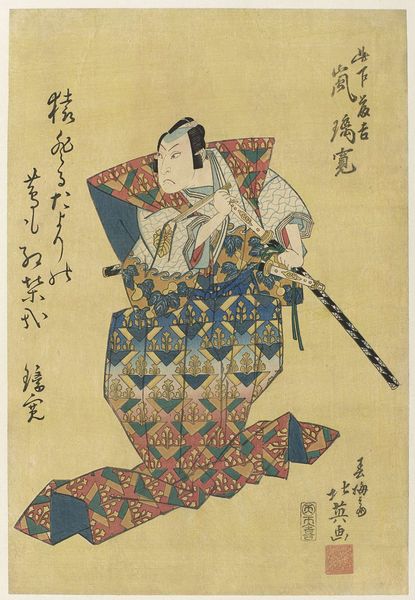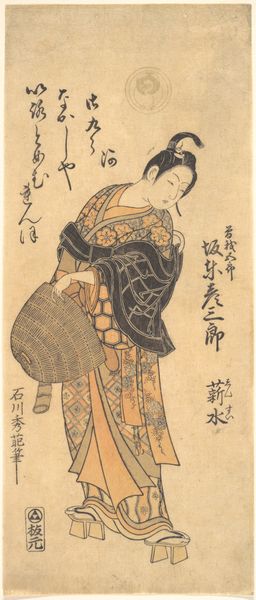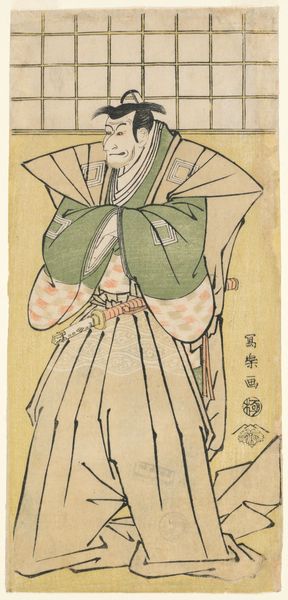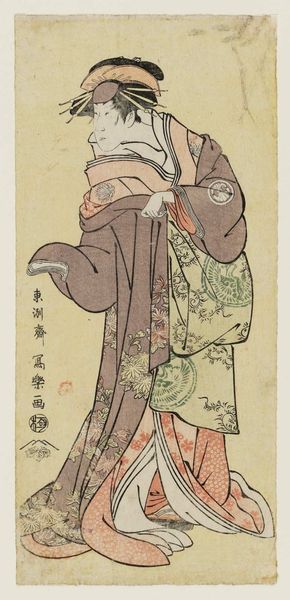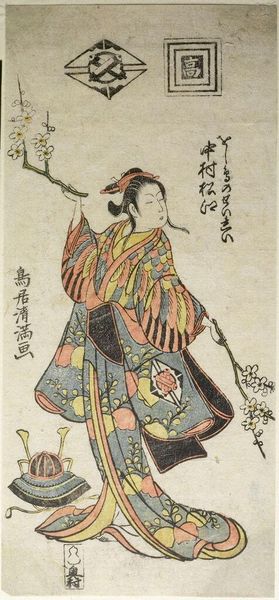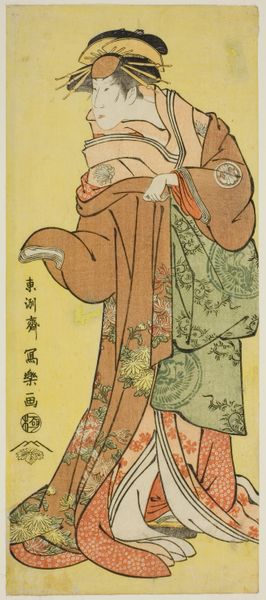
Matsumoto Kōshirō IV as the hick spendthrift from Yamato, actually Ninokuchimura Magoemon 1794
0:00
0:00
print, woodblock-print
#
portrait
# print
#
caricature
#
asian-art
#
ukiyo-e
#
figuration
#
woodblock-print
#
costume
Copyright: Public domain
This woodblock print by Tōshūsai Sharaku captures Matsumoto Kōshirō IV as a character from a Kabuki play. Note the pipe, tobacco pouch, and inrō case at his waist. These symbols of leisure and wealth clash with his role as a ‘hick spendthrift,’ revealing a tension between appearance and reality. Consider the recurring image of the tobacco pipe across cultures. From the Native American peace pipe to the opium dens of the East, smoking has been a ritualized act. It is laden with social meaning, often signifying contemplation, relaxation, or even rebellion, but, here, it emphasizes the character's assumed wealth. We observe the psychological depth of the image through the actor's melancholic gaze. This is a recurring trait found in renaissance art when representing people in positions of power. Similarly, such compositions engage viewers on a subconscious level, evoking a deep, empathetic response. The pipe, the pouch, and the inrō case echo through time. They reappear as emblems of status in various guises. The power of symbols lies in their cyclical return. Each time they resurface, they evolve, carrying the weight of history and shaping our collective memory.
Comments
No comments
Be the first to comment and join the conversation on the ultimate creative platform.

